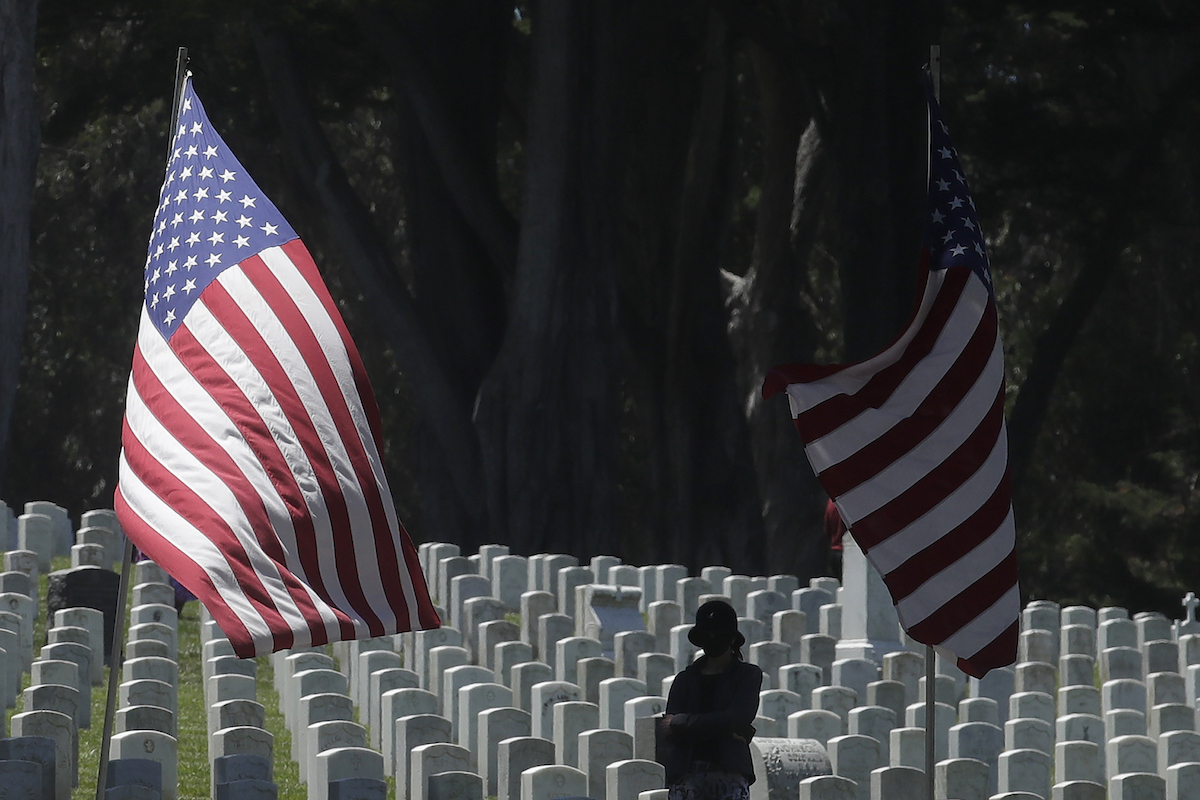Memorial Day has historically been a day set aside to commemorate the millions of Americans fallen in war. Although the day now involves celebrating America’s war dead regardless of color or creed, what many may not know is that Memorial Day’s origins are actually deeply linked to America’s struggle with racism. Although our racial struggles continue, they were once far worse and we would do well to understand the nuances of that conflict. By understanding the moral dilemmas of the past, we may gain additional wisdom for the issues we face today.
In the years directly following the Civil War, America was in turmoil. Despite Lincoln’s exhortations for malice towards none and charity for all, the divisions from the war had torn apart relationships between states, communities, and even families. All these divisions were further complicated by the inevitable question that follows every war: How ought we to remember the fallen? America had to determine the best way to preserve the memories not only of the Union dead but also of their Confederate counterparts. Oftentimes the Confederate fallen had been close friends with their Union antagonists, further complicating matters. On a national level, reconciliation seemed near impossible.
One objective, however, was unavoidable: The dead must be honored. One example involved recently freed slaves and black soldiers. A Confederate camp in Charleston, South Carolina, had been used to hold Union prisoners of war, many of whom died there owing to the deplorable conditions. Those black soldiers led a march around the camp to show respect for the Union soldiers who had fallen to help liberate them. According to reports, “The group sang hymns, gave readings and distributed flowers around the cemetery,” with participants from schoolchildren to black pastors marching around the camp singing songs like “John Brown’s Body” and the “Star-Spangled Banner.” This simple memorial led by freed slaves would plant the seeds for a national movement.
In another instance, the women of Columbus, a small town in Mississippi that had been turned into a medical center in the wake of the casualties in the Battle of Shiloh, decorated the graves of not only the Confederate dead but their Union counterparts as well. With more than 3,000 dead, the New York Tribune in 1867 reported that “the women of Columbus, Mississippi, animated by nobler sentiments than many of their sisters, have shown themselves impartial in their offerings made to the memory of the dead. They screwed flowers alike on the graves of the Confederate and of National soldiers.” This honoring of friend and foe would go on to garner national attention, with the Weekly Standard in Raleigh, North Carolina, reporting that “no distinction should be made between the departed heroes of opposing sides.” And so in 1868 the tradition of Decoration Day began, where the graves of the fallen soldiers would be decorated, often with flowers and speeches, as a reminder of the bravery of those who had died.
The practice spread, and in 1871 a crowd gathered in Arlington National Cemetery to celebrate Decoration Day, marked in part by an address from famed abolitionist Frederick Douglass. A former slave, Douglass minced no words when it came to the moral standing of the thousands who had died in the war—to him, despite its being a national day of remembrance, distinctions had to be made. “We are sometimes asked, in the name of patriotism, to forget the merits of this fearful struggle, and to remember with equal admiration those who struck at the nation’s life and those who struck to save it,” said Douglass, acknowledging the undoubted sacrifice on both sides. And yet, “if we ought to forget a war which has filled our land with widows and orphans … I ask, in the name of all things sacred, what shall men remember?”
To Douglass, it was not enough to remember bravery, but bravery combined with uprightness. “We must never forget that victory to the rebellion meant death to the republic,” he exhorted his audience. “We must never forget that the loyal soldiers who rest beneath this sod flung themselves between the nation and the nation’s destroyers.” With Douglass’ words, the practice of remembrance was elevated from a mere memorial of bravery in war to a respectful commemoration of those who gave their all to protect American life and liberty.
As Reconstruction ended, and the attempt to redress the lingering social and economic effects of chattel slavery slowly ended due to a growing political reaction and the rise of white supremacist groups like the Ku Klux Klan, the tide shifted again, and racial politics again came into play. Historian David Blight notes that stories like the 1865 POW camp memorial in Charleston were buried by the white press, uninterested in episodes that did not fit Southern narratives, “that didn’t fit their version of what the war was all about.” By 1890, Decoration Day had taken on a wholly separate meaning in the American South, becoming an object of Confederate pride and culture instead of the defense of American liberty that Douglass had envisioned. And yet stories like the Charleston memorial lived on as oral tradition, while historians worked to bring them to the printed page in works like Blight’s own Race and Reunion: The Civil War in American Memory.
As the decades rolled on and America reeled from both the First and Second World Wars, Decoration Day took on a far larger meaning, becoming a symbol for honoring America’s fallen defenders in all its many wars. In 1967, it was renamedMemorial Day, and in the wake of the civil rights movement regained some of the focus on emancipation and justice that had been lost in post-Reconstruction narratives. President Barack Obama noted the ideological side of Memorial Day in a 2010 address, asserting that the day meant “something more” than mere remembrance of fallen soldiers: “[a] steadfast commitment to serve, to fight, and if necessary, to die, to preserve America and advance the ideals we cherish … a commitment witnessed at each defining moment along the journey of this country.”
While Memorial Day has its roots in the horrific cost of the battle against American racial prejudice, much of that remains buried as the celebration has been reduced, as have so many American holidays, to a three-day weekend, the unofficial start of summer, and super-sales shopping sprees. It has taken the faithful efforts of historians like Blight to bring many of the holiday’s most compelling stories back into the light: stories about human nature and suffering and the complicated ways in which a fractured nation strives to grieve for its dead. Even now, America’s racial struggles still clearly divide and wound, as even racial champions like Douglass prove complicated for modern readers to understand. It is, however, worth remembering stories like the women of Columbus and the freed slaves of Charleston and the words of Douglass. Their words and deeds paint a complex, morally complicated picture—of how a society’s desire to respect its protectors can transcend cultural and racial division even as it recognizes the division that gave rise to a need for protectors in the first place.
Perhaps Douglass’ words, spoken more than 150 years ago, describe the issue best: “Dark and sad will be the hour to this nation when it forgets to pay grateful homage to its greatest benefactors … whether living or dead, whether in time or eternity, the loyal soldiers who imperiled all for country and freedom are one and inseparable.”

